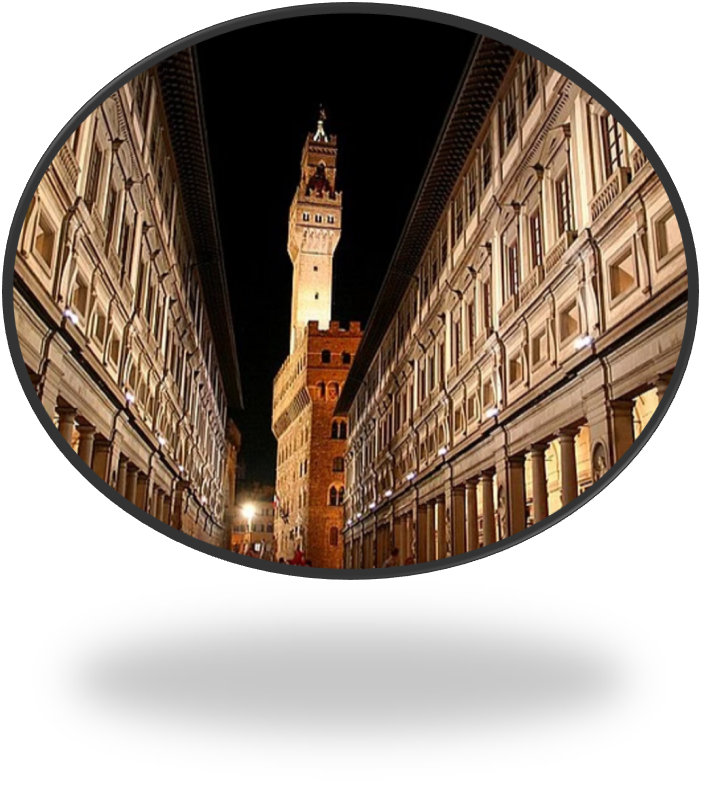Uffizi Gallery
The Uffizi Gallery (Galleria degli Uffizi) in Florence is one of the most important and famous art galleries in the world. It is located in the heart of the city, next to the Arno River and near the Duomo and the Ponte Vecchio bridge.
History:Establishment: The gallery was founded in the 16th century by the Medici family, one of the richest and most influential families in Italian history. The building itself was designed by the architect Giorgio Vasari in 1560, originally as an administrative center (hence the name "Uffizi" meaning "offices").Artistic purpose: In the 16th and 17th centuries, the Medici began to use parts of the building to store their private art collections. Over the years, the collections grew and became a museum open to the public.Contents and collections:The Uffizi Gallery displays an extraordinary collection of art from the Renaissance and Baroque periods, including masterpieces by artists such as:
Sandro Botticelli: "The Birth of Venus" and "Primavera" (Spring). Leonardo da Vinci: Early works such as "The Annunciation". Michelangelo: Works such as "The Holy Family" (Tondo Doni). Raphael, Titian, Caravaggio and Giotto: Significant works that represent the development of European art. The gallery today: Structure: The building remains as it was originally, with long corridors decorated with sculptures and paintings. Visits: The gallery attracts millions of visitors each year, and entry to it sometimes requires advance ticket reservations due to high demand. Cultural significance: The Uffizi is considered a central institution in the artistic and cultural history of Europe, and it provides an in-depth look at the period when Florence was a world center of creativity and art. If you visit the gallery, don't forget to admire the view from its terrace, which offers a spectacular view of Florence.




